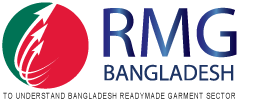সুতা আমদানির মারপ্যাঁচে তৈরি পোশাকশিল্পের ক্ষতিটা কোথায়
দেশের যেকোনো ব্যবসা-বাণিজ্যের উন্নতির জন্য একটি দীর্ঘমেয়াদি পরিকল্পনা, যা দেশি শিল্পের বিকাশে সাহায্য করবে। তাতে নতুন কর্মসংস্থান সৃষ্টি, বৈদেশিক বাণিজ্যসহ বিভিন্ন ক্ষেত্রে দেশ এগিয়ে যাবে। চার দশকের বেশি সময় উদ্যোক্তাদের একাগ্রতা ও পরিশ্রম, শ্রমিকদের অবদান এবং সরকারের নীতি সহায়তার কারণে তৈরি পোশাকশিল্প একটা পর্যায়ে পৌঁছেছে। তবে দুঃখজনক হলেও সত্য যে সামনের দিনের চ্যালেঞ্জ মোকাবিলা করে শীর্ষ রপ্তানি আয়ের এই শিল্পকে নতুন উচ্চতায় নিয়ে যাওয়ার জন্য দীর্ঘমেয়াদি পরিকল্পনা নেই। বরং মাঝেমধ্যেই বিচ্ছিন্ন কিছু কর্মকাণ্ড কিংবা ভুল নীতির কারণে নিত্যনতুন চ্যালেঞ্জের মুখোমুখি হচ্ছে শিল্পটি।
সাম্প্রতিক সময়ে দেশের রপ্তানিমুখী তৈরি পোশাক খাতে অনেক আলোচিত বিষয়ের মধ্যে একটি হচ্ছে বিভিন্ন অভিযোগে গত ১৫ এপ্রিল ভারত থেকে স্থলবন্দর দিয়ে সুতা আমদানি বন্ধ করে জাতীয় রাজস্ব বোর্ড (এনবিআর)। সমুদ্রবন্দর দিয়ে আমদানির সুযোগটি বিদ্যমান রয়েছে। যদিও তাতে সময় বেশি লাগে। তার কয়েক দিন আগে ট্রান্সশিপমেন্টের মাধ্যমে ভারতীয় বন্দর ব্যবহার করে তৃতীয় দেশে বাংলাদেশের পণ্য যাওয়ার ব্যবস্থা প্রত্যাহার করেছে ভারত। ভারতের সেন্ট্রাল বোর্ড অব ইনডাইরেক্ট ট্যাক্সেস অ্যান্ড কাস্টমস (সিবিআইসি) ৮ এপ্রিল এই সুবিধা বাতিল করে।
বাংলাদেশে তুলা উৎপাদন হয় না বললেই চলে। ফলে বিদেশ থেকে আমদানি করতে হয়। বিভিন্ন দেশ থেকে তুলা আমদানি করে সুতা উৎপাদনে অনেক স্পিনিং মিল বা সুতার কল গড়ে উঠেছে। ভারত থেকেও তুলা আমদানি হয়। মাঝে মোট তুলা আমদানি একটি বড় অংশ ভারত থেকে এলেও এখন কিছুটা কমেছে। তুলার পাশাপাশি পার্শ্ববর্তী এই দেশ থেকে সুতাও আসে। বাংলাদেশে স্পিনিং মিল থাকার পরও ভারত থেকে সুতা আসার বড় কারণ দাম। ভারতীয় সুতার দাম প্রতি কেজিতে ২০ থেকে ৩০ সেন্ট কম পড়ে। বাংলাদেশের সুতার দাম বেশি হলেও নগদ সহায়তার কারণে সেটি পুষিয়ে নিতে পারতেন তৈরি পোশাকশিল্পের উদ্যোক্তারা। তবে বিগত সরকার দুই দফায় নগদ সহায়তা কমানোর পর পরিস্থিতি বদলে যায়। প্রতিযোগিতা সক্ষমতা ধরে রাখতে গত জুলাইয়ের পর কিছুটা কম দামের কারণে ভারতীয় সুতা আমদানি বাড়তে থাকে।
ভারতীয় সুতা আমদানি প্রক্রিয়ায় বেশ কিছু অনিয়মের অভিযোগ দীর্ঘদিন ধরেই করে আসছেন বাংলাদেশের স্পিনিং মিলের মালিকেরা। তার মধ্যে উল্লেখযোগ্য, ভারত থেকে সুতা আমদানিতে মিথ্যা ঘোষণা ও কম মূল্যে সুতা আসছে। উদাহরণ দিয়ে বলা যেতে পারে, স্থলসীমান্তে বাংলাদেশ কাস্টমসে যে পরিমাণ সুতা আমদানির কথা বলা হয়, এর চেয়ে বেশি সুতা দেশে আসে। লোকবলের অভাবে সশরীর পরিদর্শন করার সক্ষমতা কম কাস্টমস কর্তৃপক্ষের। এই সুযোগে ৩০ কাউন্টের সুতার চালানের ভেতরে ৮০ কাউন্টের সুতা আনার অভিযোগও আছে।
অসুখ হলে অবশ্যই আমাদের চিকিৎসা করতে হবে। সেটি না করে ভিন্ন কিছু করাটা যৌক্তিক নয়। তৈরি পোশাকশিল্পের মালিকদের সংগঠনের নেতারা সরকারের সংশ্লিষ্ট কর্মকর্তাদের কাছে অনুরোধ করেছেন, স্থলবন্দর দিয়ে আমদানি বন্ধ না করে অনিয়ম বন্ধের জোরালো পদক্ষেপ নেওয়া হোক। সুতার কাউন্ট পরিমাপ করার জন্য যন্ত্রপাতি কেনার প্রয়োজন হলে সেটিও দিতে রাজি আছেন তাঁরা। আগ বাড়িয়ে এমন প্রস্তাবের কারণ হচ্ছে, তৈরি পোশাক রপ্তানিতে আমাদের কারখানাগুলোর প্রতিযোগিতা সক্ষমতা ধরে রাখা।
আমাদের বুঝতে হবে, তৈরি পোশাকের ব্যবসাটি বৈশ্বিক। এখানে প্রতিনিয়ত বিদেশি সরবরাহকারী প্রতিষ্ঠানের সঙ্গে প্রতিযোগিতা করতে হয়। অনেক সময় এক বা দুই সেন্টের জন্য পোশাকের ক্রয়াদেশ হাতছাড়াও হয়ে যায়। এখন আপনি প্রশ্ন করতে পারেন, তাহলে কি আমরা দেশি মিলের সুতা ব্যবহার করব না? দেশি শিল্পের বিকাশে চেষ্টা করব না? আমার উত্তর হচ্ছে, অবশ্যই করব। তবে সেই সুতা প্রতিযোগিতামূলক দামে হতে হবে। না হলে আমরা এই সুতা দিয়ে বৈশ্বিক বাজারে প্রতিযোগিতা করতে পারব না। মজার বিষয় হচ্ছে, স্থলবন্দর দিয়ে সুতা আমদানি বন্ধের পর দেশি মিলমালিকেরা সুতার দাম বাড়িয়ে দিয়েছেন। এখানে কোনো তদারকি সংস্থা না থাকায় পোশাকশিল্পের মালিকেরা ভুক্তভোগী হচ্ছেন। তাঁদের বাধ্য হয়ে বেশি দামে সুতা কিনতে হচ্ছে।
স্থলবন্দর দিয়ে আমদানি বন্ধের পর সুতার মূল্যবৃদ্ধির পরিপ্রেক্ষিতে আরেকটি বিষয় জোরালোভাবেও সামনে আসছে যে দেশে সুতার চাহিদা ও জোগানের বাস্তব চিত্র কী? সাধারণভাবে বলা যায়, চাহিদা ও জোগানের মধ্যে অসামঞ্জস্য হলেই যেকোনো পণ্যের দাম বাড়ে বা কমে। ফলে সুতার আমদানি নিয়ে কোনো বড় সিদ্ধান্ত নেওয়ার আগে চাহিদা-জোগানের বিষয়টি বিশ্বাসযোগ্যভাবে পরিষ্কার হওয়ার প্রয়োজন ছিল।
বস্ত্রকলের মালিকদের প্রায়ই বলতে দেখা যায়, দীর্ঘদিন ধরে গ্যাস–সংকটে ভুগছেন। তাঁরা অতিরিক্ত দাম দিয়েও চাহিদামতো গ্যাস পাচ্ছেন না। শুল্ক-কর, ব্যাংকঋণের সুদহার বৃদ্ধিসহ বিভিন্ন কারণে ব্যবসার খরচ বাড়ছে। এতে তাঁদের উৎপাদন ব্যয়ও ব্যাপকভাবে বাড়ছে। কথাগুলো শতভাগ সত্য। ফলে দেশি বস্ত্রকলগুলোর প্রতিযোগিতা সক্ষমতা টিকিয়ে রাখতে সরকারকে বিশেষ উদ্যোগ নিতে হবে। যেহেতু বাড়তি টাকা দিয়েও তাঁরা গ্যাস পাচ্ছেন না, তাঁদের কীভাবে প্রণোদনা দেওয়া যায়, সেই ব্যবস্থা করতে হবে। কারণ, দেশের ভেতরে শক্তিশালী সংযোগ শিল্প না থাকলে তৈরি পোশাকের রপ্তানিও একসময় না একসময় ভয়াবহ বিপদে পড়বে। ফলে গ্যাস–সংকটের মতো মূল সমস্যার সমাধান না করে হুট করে সুতার মতো গুরুত্বপূর্ণ কাঁচামাল আমদানি প্রক্রিয়া জটিল করলে শেষ বিচারে দেশেরই বড় ধরনের ক্ষতি হবে।
করোনার পর গত চার থেকে পাঁচ বছরে দেশে-বিদেশে একের পর এক চ্যালেঞ্জের মুখে পড়েছে তৈরি পোশাকশিল্প। তার মধ্যে রয়েছে রাশিয়া-ইউক্রেন যুদ্ধ, মধ্যপ্রাচ্যে উত্তেজনা, ট্রাম্পের পাল্টা শুল্ক ইত্যাদি। এত কিছুর পর বাংলাদেশের পোশাক রপ্তানি বাড়ছে। ভবিষ্যতেও বাড়বে আশা করা যায়। তার কারণ বাংলাদেশ এই জায়গায় বড় ধরনের সক্ষমতা ও দক্ষতা তৈরি করে ফেলেছে। তবে বিভিন্ন কারণে কাঁচামালের সংযোগ শিল্পে দুর্বলতা রয়েই গেছে।
পরিশেষে বলতে পারি, বর্তমান মুক্তবাজার অর্থনীতি কোনো কিছুকে আটকে রেখে উন্নতি করার সুযোগ নেই। অন্য দেশের সঙ্গে প্রতিযোগিতা করেই আমাদের বিভিন্ন খাতকে শক্তিশালী হতে হবে। কোনো কিছু কৃত্রিমভাবে আটকে রাখলে কোনো না কোনোভাবে তার নেতিবাচক প্রভাব পড়বেই। দেশের ভেতরে প্রতিযোগিতামূলক দামে মানসম্মত পণ্য পেলে কখনোই অন্য দেশে যাবেন না উদ্যোক্তারা। ফলে সাময়িকভাবে একটি পক্ষকে সুবিধা না দিয়ে সামগ্রিকভাবে দেশের ব্যবসা-বাণিজ্য ও অর্থনীতি কীভাবে এগিয়ে যাবে, সেই সিদ্ধান্ত নিতে হবে সরকারকে। কারণ, আমরা সবাই বাংলাদেশের বিজয় দেখতে চাই।
ই-মেইল: Mohiuddinrubel@gmail.com


















